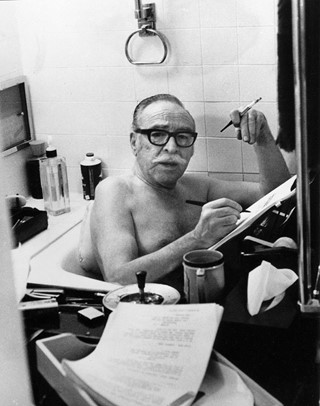Discover the weird and wonderful writing sanctuaries of some of your favourite authors
Writers are famous for their meticulous routines and tendencies – and it has taken some pretty eccentric rituals to inspire our best-loved novels. Take Victor Hugo who placed himself under house arrest to write The Hunchback of Notre Dame, locking away his clothes to avoid the temptation to go outside and allowing himself only a large grey shawl to write in. Dame Edith Sitwell chose to climb into an open coffin and lie down before she began writing while Truman Capote would not begin or end a piece of writing on a Friday, insisted on changing hotel rooms if the room phone number contained the number 13 and never allowed more than three cigarette butts to sit in his ashtray, storing the extra ones in the pocket of his coat. Perhaps one of the most intriguing things however is where these writers chose to write. From desks in sheds to beds and cars, here we explore the idiosyncratic writing spots inhabited by some of our favourite writers.
In the bath
Poet Rod McKuen wrote song lyrics in his bathtub and Benjamin Franklin took what he called ‘tonic baths’ in the open air of his bedroom each morning, working naked for up to an hour to start his day. Dalton Trumbo too wrote in the bath at night, although not alone, he liked the company of a parrot, a gift to the writer from the actor Kirk Douglas. Agatha Christie created her plots in a large Victorian bathtub whilst munching on apples. Before renovating her house her architect was told, “I want a big bath, and I need a ledge because I like to eat apples.”
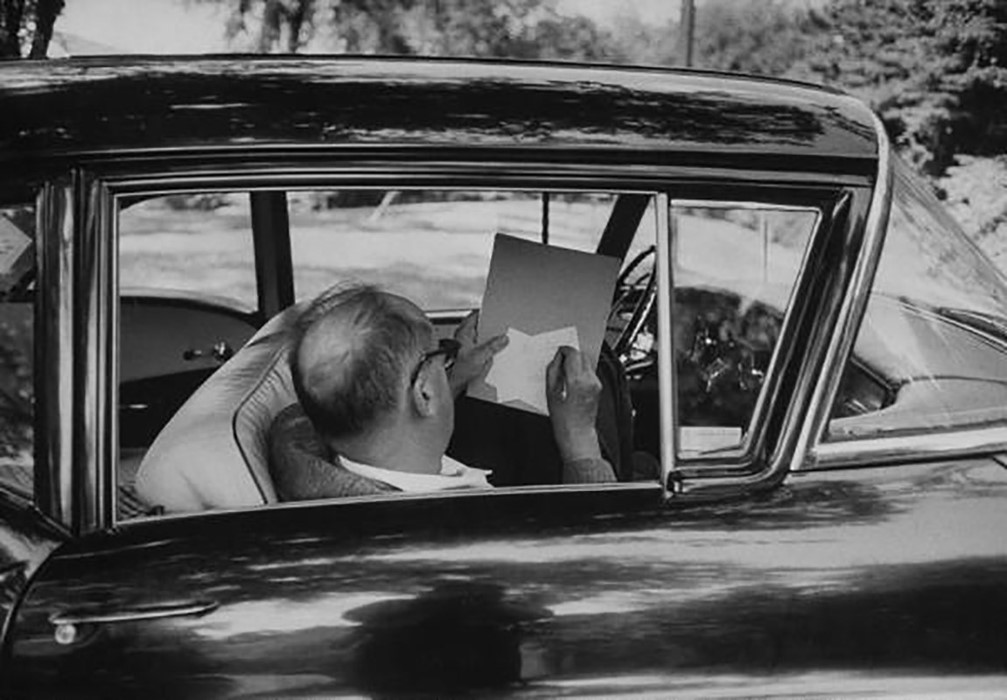
In the car
Gertrude Stein liked to write in the driver’s seat of “Lady Godiva” her Model T Ford while her partner Alice B. Tolkas ran errands. Celia Blue Jonson notes that Stein was “particularly inspired by the traffic on busy Parisian streets. Automobiles stopped and started with a rhythm that thrummed right into her poetry and prose.” Vladimir Nabokov is also said to have preferred reading and writing in the privacy of a parked car, always writing on index-cards, a portable strategy that allowed him to compose on the move while his wife drove him around on his adored butterfly expeditions.
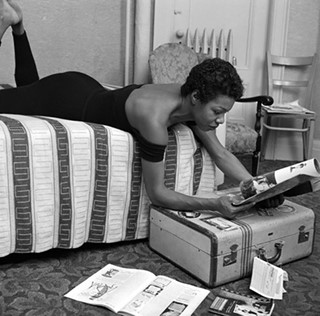
In a hotel room
Maya Angelou liked to rent a hotel room in her hometown and pay for it by the month. “I have a bedroom, with a bed, a table, and a bath. I have Roget’s Thesaurus, a dictionary, and the Bible. Usually a deck of cards and some crossword puzzles.” Angelou had all the paintings and any decoration taken out of the room and allowed no member of staff or management to enter, “just in case I’ve thrown a piece of paper on the floor, I don’t want it discarded”. A hotel room was not the exclusive retreat of Angelou, Thomas Wolfe, Jack Kerouac, Arthur Miller and William Burroughs all spent some time writing in the infamous Chelsea Hotel.
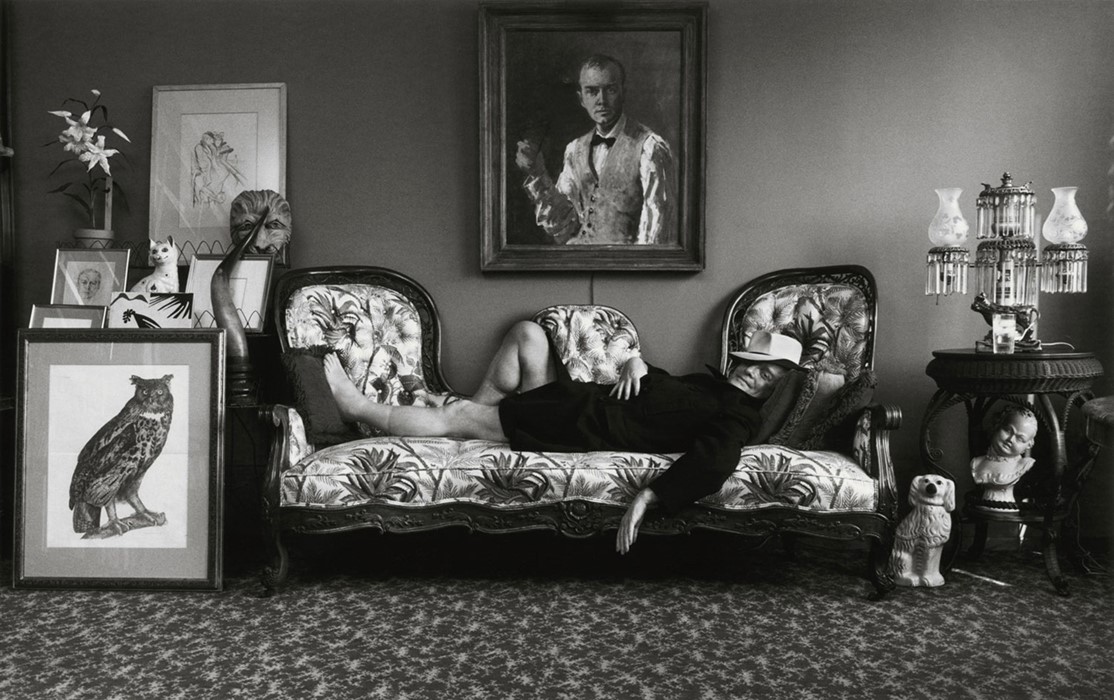
Lying down
Truman Capote preferred to lie down while he wrote, “I am a completely horizontal author. I can’t think unless I’m lying down, either in bed or stretched on a couch and with a cigarette and coffee handy.” As James Joyce’s eyesight deteriorated he too began to write in bed. Lying on his stomach at night in a bright white coat, Joyce wrote with large blue crayons. According to his sister, the coat “gave a kind of white light” and the crayon large enough lettering to read his writing on the page. Edith Wharton also wrote in bed, her dog under one arm, the other arm occupied with pushing the pages to the ground – the pile was later picked up by a maid for her secretary to type up. Marcel Proust too wrote in bed at night, sleeping in the day and blocking out the noise of the bustling Parisian street by lining the walls with cork.

In a shed
George Bernard Shaw wrote in a writing hut he built in the gardens of his home in Hertfordshire. The hut was built on a revolving mechanism, allowing Shaw to follow the sun throughout the day as he wrote. “People bother me,” Shaw confessed, “I come here to hide from them.” He named the hut ‘London’ so his staff wouldn’t be lying when they said he’d ‘gone to London’. It’s not only Shaw who preferred a shed – Roald Dahl’s garden shed, a writing sanctuary filled with a suitably odd collection of personal paraphernalia, is open to the public at the Roald Dahl museum; meanwhile Dylan Thomas wrote in a bike shed, a ‘word-splashed hut’ that sat precariously on stilts on the cliff above his boathouse in Laugharne.
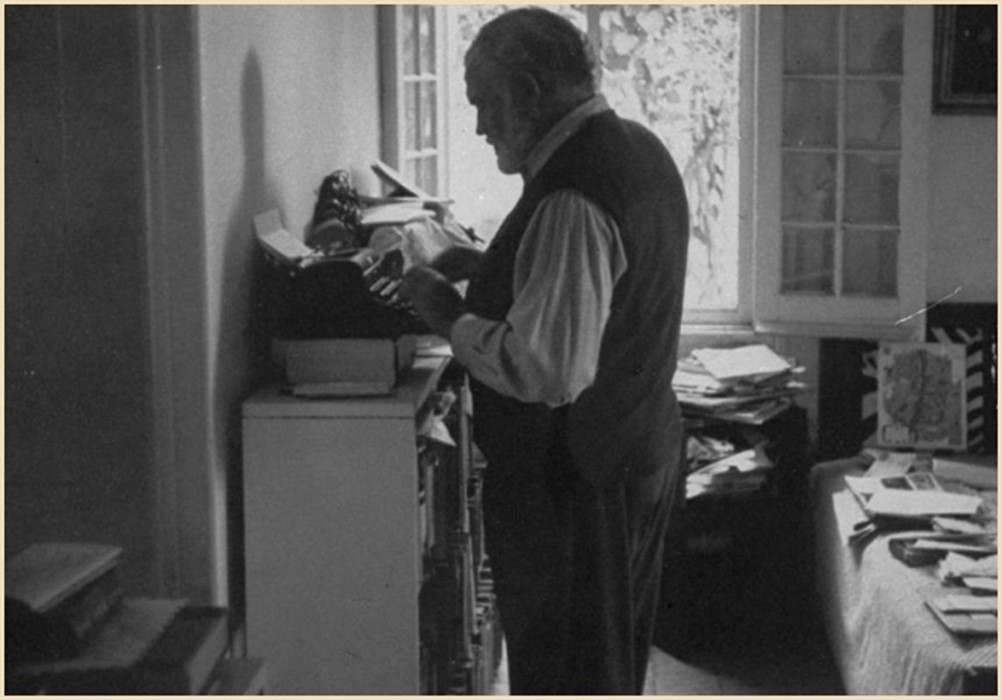
While standing
While Virginia Woolf did eventually come to work in a ‘Room of her own’, a shed to be exact, in her 20s Woolf worked standing up at a 3,6” desk. This way of writing is thought to have been chosen in an attempt not to be outdone by her sister, the artist Vanessa Bell, who always painted standing. Quentin Bell, Woolf’s nephew, writes “This led Virginia to feel that her own pursuit might appear less arduous than that of her sister unless she set matters on a footing of equality.” Ernest Hemingway too wrote standing, his work desk the top of a cluttered bookshelf only a few feet away from his bed. Wallace Stevens could not sit down either, writing his poetry on slips of paper while walking, then handing them to his secretary to type up.
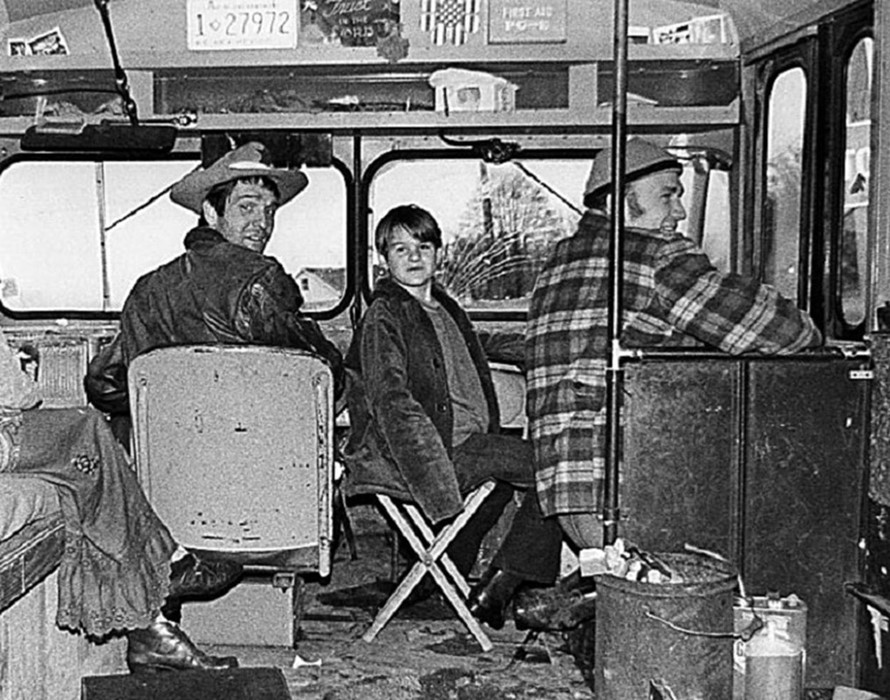
On the move
Walter Scott wrote his epic poem Marmion on horseback, riding in the countryside near Edinburgh. He said “I had many a grand gallop among these braes when I was thinking of ‘Marmion’”. Riding of a different kind inspired Joseph Heller, who famously stated that the closing line of Catch-22 came to him on a bus. Tom Wolfe not only wrote about travelling but wrote while, chronicling his journeys on ‘Further’, the LSD-fuelled bus that travelled across America in 1964 with the “Merrry Pranskters” that were Ken Kesey and Neal Cassady in his book The Electric Kool-Aid Acid Test.
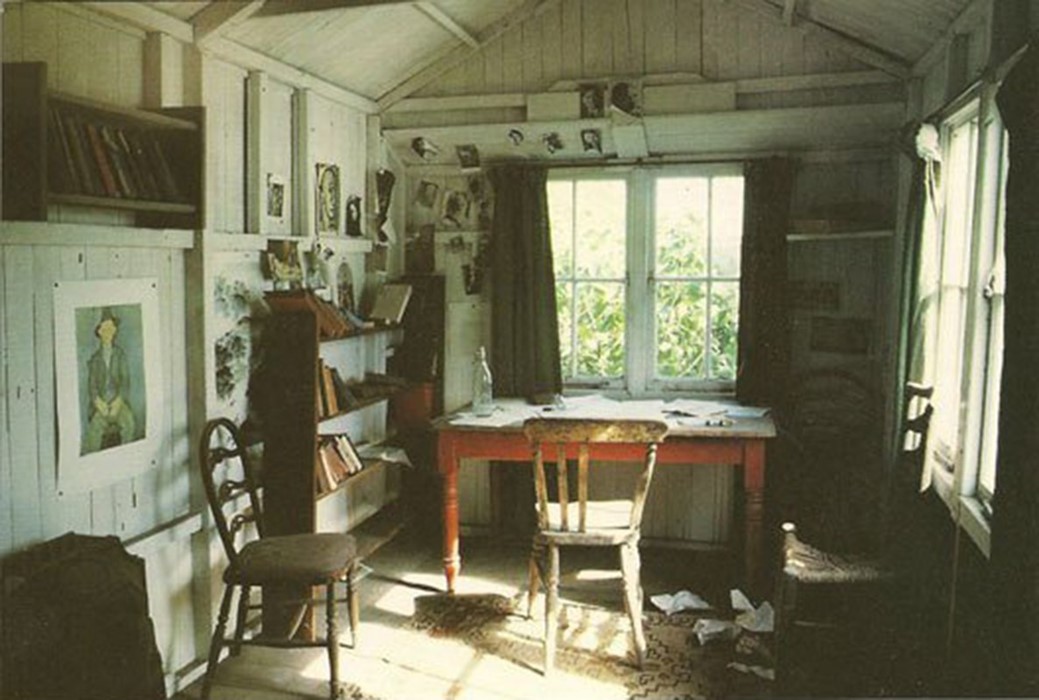
Amongst inspiring pin ups
Sebastian Faulks has a “patron saint” for each book he writes. On the wall he faces to write is a small cameo of Tolstoy, a bronze relief of Dickens and a printed out picture of Orwell. Dylan Thomas filled his hut with pictures of Byron, Walt Whitman, Louis MacNeice and W.H Auden as well as lists of alliterative words, while Roald Dahl preferred a quote from Edgar Degas pinned to the wall of his shed: “Art is a lie to which one gives the accent of truth.”
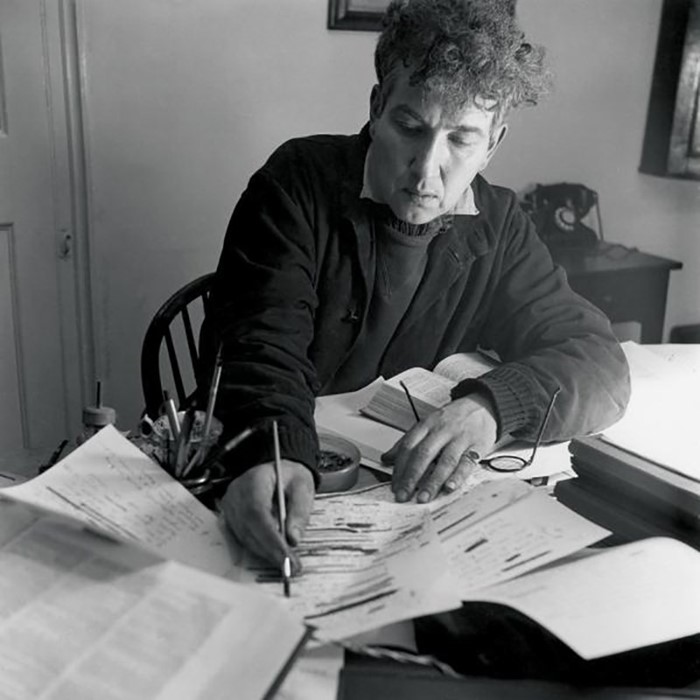
Surrounded by specific objects
Robert Graves wrote in a room furnished only with objects made by hand. Believing the influx of anything else disrupted his creative flow Graves said, “one secret of being able to think is to have as little as possible around you that is not made by hand.” In a similar vein Nicholas Mosley surrounds himself with “bits and pieces of folk-art that I have picked up from around the world” and John Steinbeck always kept twelve perfectly sharpened pencils on his desk. According to Goethe, Friedrich Schiller too had a bizarre preference in his surroundings, finding the smell of a drawer of rotten apples in his desk inspiring.
